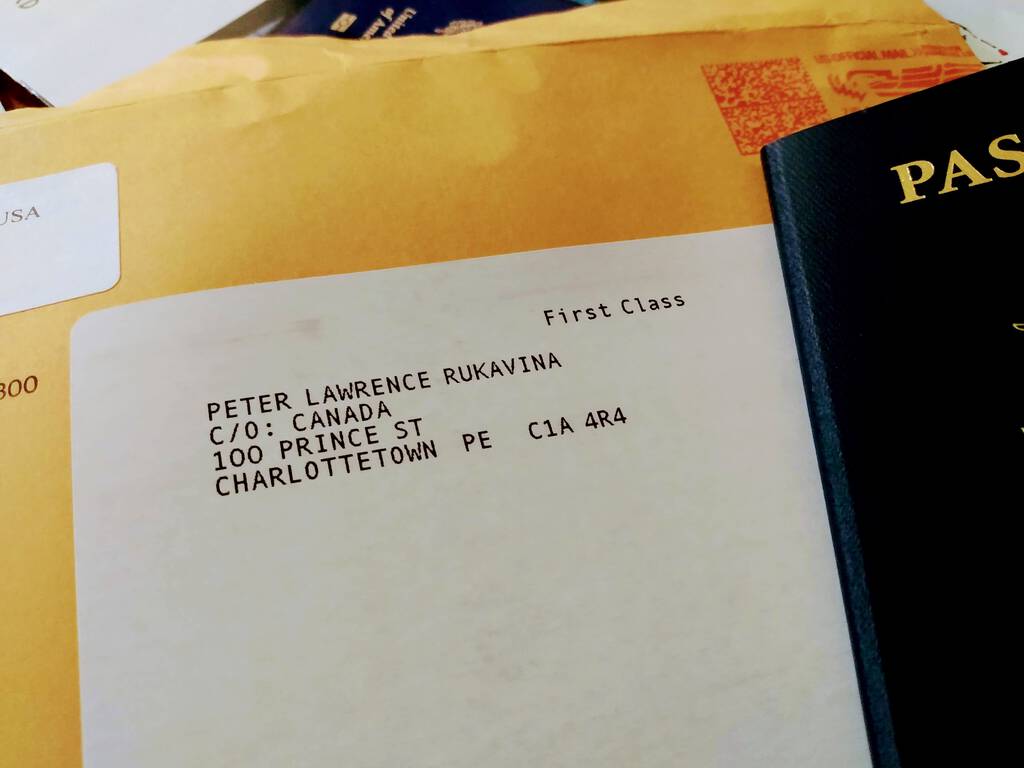I am planning a trip to New Hampshire in September and I want to travel with the lowest carbon emissions possible.
According to the our Climate Change Action Plan:
Transportation accounts for almost half of our GHG emissions. Many of these emissions come from passenger vehicles, such as cars, trucks, and SUVs. Transport trucks, airplanes, boats, and recreational vehicles also produce emissions.
Given that Efficiency PEI, is the provincial agency that “offers programs and information for Islanders who are interested in reducing energy consumption,” they were my first call.
“I’m looking at reducing my footprint from transportation, can you connect me with someone who can advise me?”
“Oh, we’ve never had that question before…”
That’s not a good sign, on two fronts. Why aren’t people calling for advice? And why isn’t the agency charged with informing us about reducing our energy consumption concerned with reducing our most GHG-contributing energy consumption?
Efficiency PEI wasn’t able to help me, and so transferred me to the main number for the Department of Transportation, Infrastructure and Energy.
They too weren’t able to help me directly, and so transferred me to the PEI Energy Corporation.
It appeared they might be able to help me, but that “the woman who knows all about that is out this week.”
This woman turned out to be Heather MacLeod, someone I’ve known for a long time, in various capacities; Heather came to the monthly meeting of the PEI Electric Vehicle Association last week and she is, indeed, on the ball.
I’m sure that when Heather returns to the office next week she’ll be able to give me some advice.
But, boy oh boy, do we need to get better at the front-facing advice-giving part of carbon emissions reduction. A call like mine, to Efficiency PEI, should have been greeted warmly and with enthusiasm I was at their front door, ready for action. But all they could do was transfer my call with the hopes that someone else could help.
With our new climate target of a 600,000 tonne reduction in yearly emissions by 2030, I’ve got 11 years to knock 4 tonnes off my personal contribution.
I need help. And I need help helping others.
We can do better than this.
Oliver was dismayed to learn that the 2019 Island Fringe Festival wasn’t going to include any audience-participation activities in its launch event, as it had in previous years.
“For every problem, there is a solution,” I am forever telling Oliver.
So he reached out to Fringe officials and, to their eminent credit, the decided to correct this oversight, and added something:
DRAMATIC READING OF YOUR FAVOURITE SONG
Come on down and give a truly dramatic reading of your favourite song… channel your best Liam Neeson as you woo the audience with your rendition of Janelle Monáe’s ‘PYNK’… or pretend you’re Viola Davis as you wow the crowd reading the lyrics of Maroon 5’s ‘Moves Like Jagger’!
Of course this parry required a thrust. And Oliver decided that I needed to participate too.
So I gave a dramatic reading of Kim Mitchell’s iconic Patio Lanterns, and Oliver recited Blackbird, by The Beatles, in his take on a Liverpudlian accent.
There is no extant recording of my performance. But I recorded Oliver’s.
I’ll be doing a dramatic reading of Kim Mitchell’s iconic Patio Lanterns tonight after 8:00 p.m. at The Haviland Club, as part of the launch of Island Fringe.
Oliver put me up to it.
A reminder that the Secret Design Bunker pop-up at Nine Yards on 63 Fitzroy Street runs today only from 12 noon until 8:00 p.m. I’ve just returned from a visit: it is the most wonderful thing. You simply must go. Be sure you get a tour of the actual bunker from Alisha and Nick.

After many months of back and forth with the U.S. Department of State, my new U.S. passport arrived in the mail yesterday, c/o Canada:

I hold a U.S. passport, as well as a Canadian one, by virtue of having been born in the U.S. to Canadian parents. For years I resisted taking out a U.S. passport because to apply for a passport required a Social Security Number, and to apply for a Social Security Number required registering for Selective Service. Eventually I aged out of the Selective Service requirement, and so the path was clear.
For my first passport, I made the application at the federal building in Bangor, Maine, in person, in 1999. It was a bracing experience that involved metal detectors. Subsequently I’ve been able to renew my passport by mail.
This time, 20 years on, was much less smooth than the previous.
Things first went off the rails when my application was rejected because I sent a U.S. dollar Canada Post money order in payment, and this was not acceptable. The letter I received on May 22 explained:
The payment you submitted is not acceptable because it is not payable through a United States bank. Please submit a new check (personal, certified, cashiers or travelers) or money order (U.S. Postal, commercial, currency exchange) payable to “U.S. Department of State” that is payable through a United States bank.
Super-convenient for Canadians, those options, what with United States banks being on every corner here. Not. Ultimately I was able to get a U.S. dollar draft drawn on a U.S. bank, from CIBC in Charlottetown.
Problem solved?
Not yet.
A month later I received another letter:
Thank you for your recent passport application. However, the identification you provided is not sufficient for passport purposes.
This was strange, as there was no requirement to submit identification, other than my old passport. The only items on the application form were:
- Your most recent U.S. passport book and/or card;
- A certified copy of your marriage certificate or court order if your name has changed;
- Fees; and
- A recent, color photograph.
Nonetheless, I was required to better identify myself. And with some intriguing options; the letter continued:
Please complete the enclosed DS-5520, Supplemental Questionnaire to Determine Identity for a U.S. Passport, and submit the form with photocopies of five (5) or more personal documents, which are five (5) years or older. For your information we have included a list of acceptable forms of personal documents that may assist our office in establishing your identity.
The list was long, and included things like “military identification” and “traffic ticket” and “school yearbook photograph with your name and photo, also with school’s name and year that it was issued.”
The challenging hurdle was the requirement that these pieces of ID needed to be five years or older.
I’ve got lots of forms of current ID, but I had to scrape the bottom of the barrel to assemble a suite of half-decade-old ID, and so I included things like my ID for the PEI Archives and Records Office (signed, more than 5 years old) and, because “Newspaper/Magazine articles (with your photo & name, news paper’s name & date)” was one of the acceptable forms of ID, this article from The Guardian from 2014:

I received no further communication from the State Department after sending in my packet of aged ID.
My passport arrived in the post yesterday. I’m good until 2029.
I’m going to save all my expiring ID cards in a bucket for use then.
There’s some pretty funky homebrew typography painted at the entrance to our driveway.

Pro tip: if you have a list of files that you need to retrieve from a webserver, you’re better off putting the list of URIs in a file, and then:
wget -i list-of-files.txt
than you are crafting a shell script like:
wget http://www.example.com/file-number-1.jpg
wget http://www.example.com/file-number-2.jpg
wget http://www.example.com/file-number-3.jpg
The former works much, much faster.
VIA Rail has a page that compares various aspects, including emissions, of the train vs. the car vs. the plane for some common central Canadian routes.
The fine print is interesting:
Train emissions calculator
The formula used to calculate train related data emissions is: (Litres of diesel fuel consumed X Emission Factor) / average of seats available on the selected route = Kg of CO2 equivalent per seat. The emission factor of 3.00715 Kg of CO2 equivalent per Liter of diesel No. 2 was used. The fuel consumption for each selected route was calculated using an average of real-time fuel consumption as measured by the Witronix technology over a 12-month period. The emission factor for diesel No. 2 is calculated by Environment Canada as part of its National Inventory Report (2011 submission) and takes into consideration the global warming potential of CO2, CH4 and N2O.
Flight emissions calculator
Number from Zerofootprint Flight emission calcultor for Air Canada used.
Car emissions calculator
For the calculations, a mid-size sedan with a combined fuel consumption rate of 10.0 Liters per 100 km was used, considering an average capacity of 4 passengers per vehicle. The distances are calculated in Kilometers using Google Maps. The formula used to calculate car related data emissions is: (Litres of gasoline consumed X Emission Factor) / average # of seats = Kg of CO2 equivalent per seat. The emission factor of 2.500 Kg of CO2 equivalent per Liter of gasoline (Tier 0) was used. The fuel consumption rate for a mid-size vehicle is an average calculated for mid-size type vehicles from the 2013 Fuel Consumption Guide developed by Natural Resources Canada. The emission factor for gasoline is calculated by Environment Canada as part of its National Inventory Report (2011 submission) and takes into consideration the global warming potential of CO2, CH4 and N2O.
I don’t know if these are the right calculations to be using, but kudos to VIA for including them.
It would be nice if VIA create a more general-purpose emissions calculator that worked for all of their routes.
My friend Mark lives out in Pownal, about 15 km east of Charlottetown.
On Thursday he was at home and needed to get to town to rendezvous with his wife Trina, and with us, for a trip out to Oyster Bed for a social.
In the normal course of affairs he would have asked Trina to drive the 30 km round trip to fetch him, but he decided to ride his bicycle to town instead.
I rode some of the route he took on an ebike earlier in the month, and so I know it’s not a flat and gentle ride.
All hail Mark.

 I am
I am